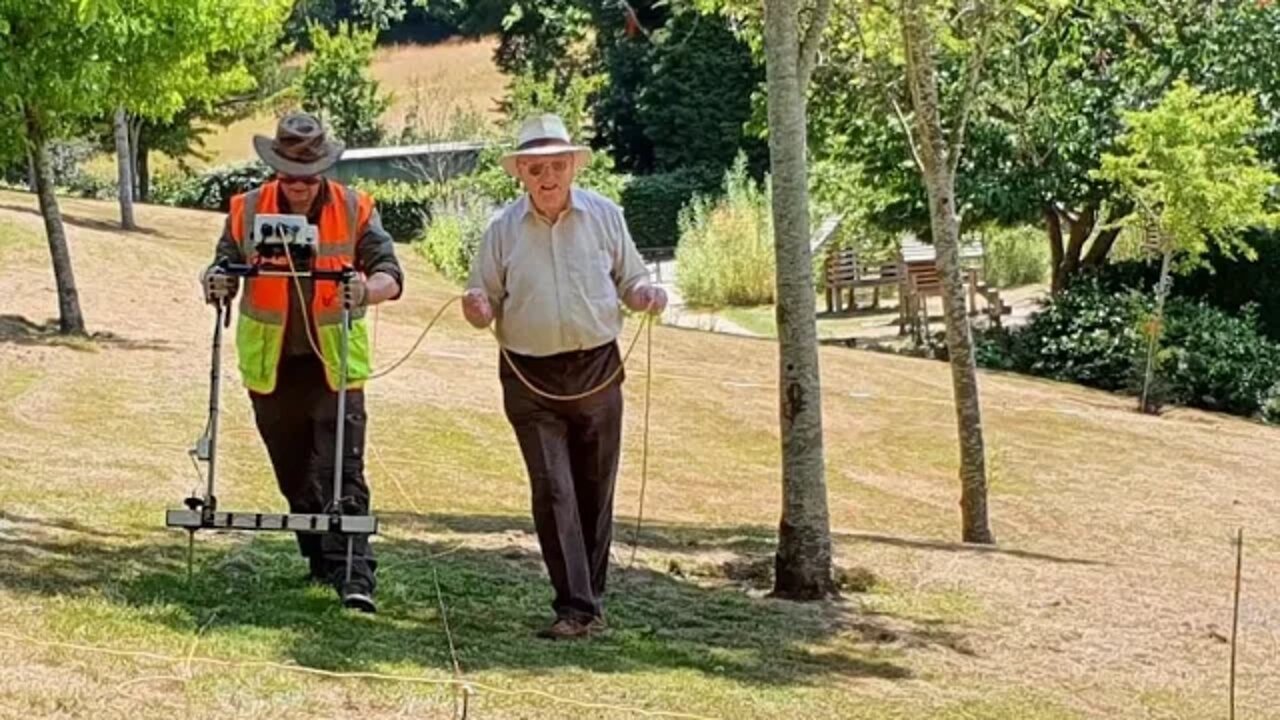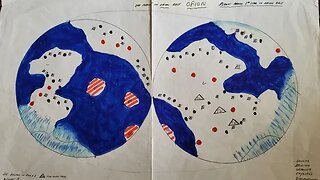Premium Only Content

Ground Resistivity Test - Calverley Ground, Archaeology + Dowsing Detective 10 7 22 50.27'
This 50.27' episode of The Dowsing Detective/Remote Viewing - featuring Peter Vincent, shows a field trip that took place on Sunday 10th July 2022, in Calverley Grounds, with supplementary filming being done on the 29th June 2022.
Peter Vincent had spotted what he thought might be a recumbent monolithic stone, sarsen or sandstone. His thinking took him in the direction of other stones being present in the ground, having been there since antiquity, before the Romans, whom he surmises would have pushed them into the ground and covered them up. If this is the case, it would change the history of the area, and add a whole different dimension to the early epoch of Tunbridge Wells.
Peter arranged for a resistivity test to be done with expertise from Geoff Burr and John Towns of the West Kent Archaeological Society, with input from Nigel Stapple from West Kent District Archaeology, who is a local Archaeologist. He set the record straight that the stones would be sandstone, and ultimately, was of the opinion that there was some thing of further interest in the park, where we had set up to carry out the test, where specifically, Peter had, through remote viewing and dowsing by map and on site, come to the conclusion that there were 18 large stones beneath the ground, 9 of which had a ley line running at the side of it, where when once standing, if that is correct, the energy of that line would dissipate skyward.
Rebbie Roo had made contact with ETN, expressing an interest to join the field trip, and came along. Her help was wonderful, and she got to see first hand what such a field trip entails, mainly, a lot of trailing around, and work...though she did get to try for the first time, her hand at dowsing. It often takes a bit of time for someone to become proficient in dowsing, so she had a good introduction.
We spent a full day working on measuring out and creating grids on the ground to better read the results of all the padding up and down throughout the day. Geoff and John were very organised and efficient, clearly, this was not their first rodeo! They explained that the resistivity test shows degrees of high or low resistance, high being equal to hard material, like stone beneath the surface or low would reflect areas such as ditches or water filled holes or dips beneath the ground...our hope was to find points of high resistance which would indicate there were large stones, such as those seen in standing stone circles etc...this would corroborate Peter's findings.
The results which we had within a few days were not 100% conclusive because the ground was very hard that day, as it had not rained for some time. This meant it was more difficult for the machines to work so effectively. It turns out that perhaps a damp autumn or spring day with softer ground would be the ideal. However, the results did show there is good reason to think there is something worth investigating further....the site was just opposite the children's playground, so we had plenty of noise to contend with, which used to be the location of the bowling green before it was seconded as an adventure playground.
This is just the type of event the subject of dowsing and remote viewing needs, where by the use of some technical apparatus allows us the ability to test the hypotheses predicated on what is seen as a fringe element, namely remote viewing and dowsing.
This is one of those areas where, like the pushing through of a wisdom tooth, slowly, slowly hidden matters find their way to the surface. Please like and subscribe - there is more to come.
-
 36:40
36:40
ETNProduction
1 year agoMissing People + Craft, Nordics, Tall Whites & More 36 40' 17 August 2023
223 -
 LIVE
LIVE
Akademiks
6 hours agoJay Z says he aint NEVER been friends w/ DIDDY! Bhad Bhabie lost her man? Travis Hunter Down Bad?
4,173 watching -
 2:27:04
2:27:04
AirCondaTv Gaming
4 hours ago $4.33 earnedWar Thunder - Tankering Around for That 10 Bomb
22.8K4 -
 4:19:05
4:19:05
SpartakusLIVE
7 hours agoThe MACHINE locks in for 12-hour POWER stream
17.4K1 -
 1:58:40
1:58:40
Robert Gouveia
6 hours agoJ6 Coverup: Prosecute LIZ CHENEY; NY Judge REJECTS Immunity; Trump Breaks Gag?
74.8K59 -
 2:22:06
2:22:06
WeAreChange
5 hours agoPSYOP Spreads: Drones Shut Down Airport In New York!
54K24 -
 1:31:18
1:31:18
Redacted News
7 hours agoEMERGENCY! NATO AND CIA ASSASSINATE TOP RUSSIAN GENERAL, PUTIN VOWS IMMEDIATE RETALIATION | Redacted
197K304 -
 56:45
56:45
VSiNLive
6 hours ago $5.02 earnedFollow the Money with Mitch Moss & Pauly Howard | Hour 1
59.2K2 -
 52:44
52:44
Candace Show Podcast
6 hours agoMy Conversation with Only Fans Model Lilly Phillips | Candace Ep 122
73.9K253 -
 LIVE
LIVE
tacetmort3m
6 hours ago🔴 LIVE - RELIC HUNTING CONTINUES - INDIANA JONES AND THE GREAT CIRCLE - PART 5
216 watching